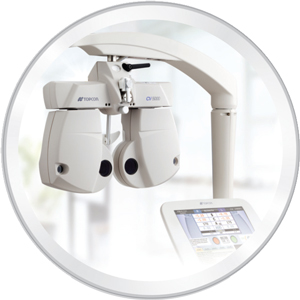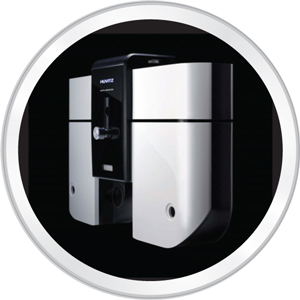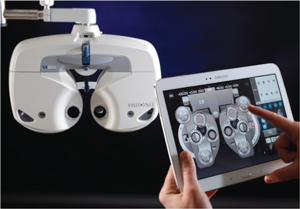| |
 |
| |
Topcon’s CV-5000S features a small optical head to enhance patient communication and comfort. |
| |
 |
| |
The Huvitz HDR-7000 digital refractor, distributed by Coburn
Technologies, is the centerpiece of a complete digital refraction
system. |
| |
 |
| |
The VX 55 from Visionix lets users digitize their manual phoropter. |